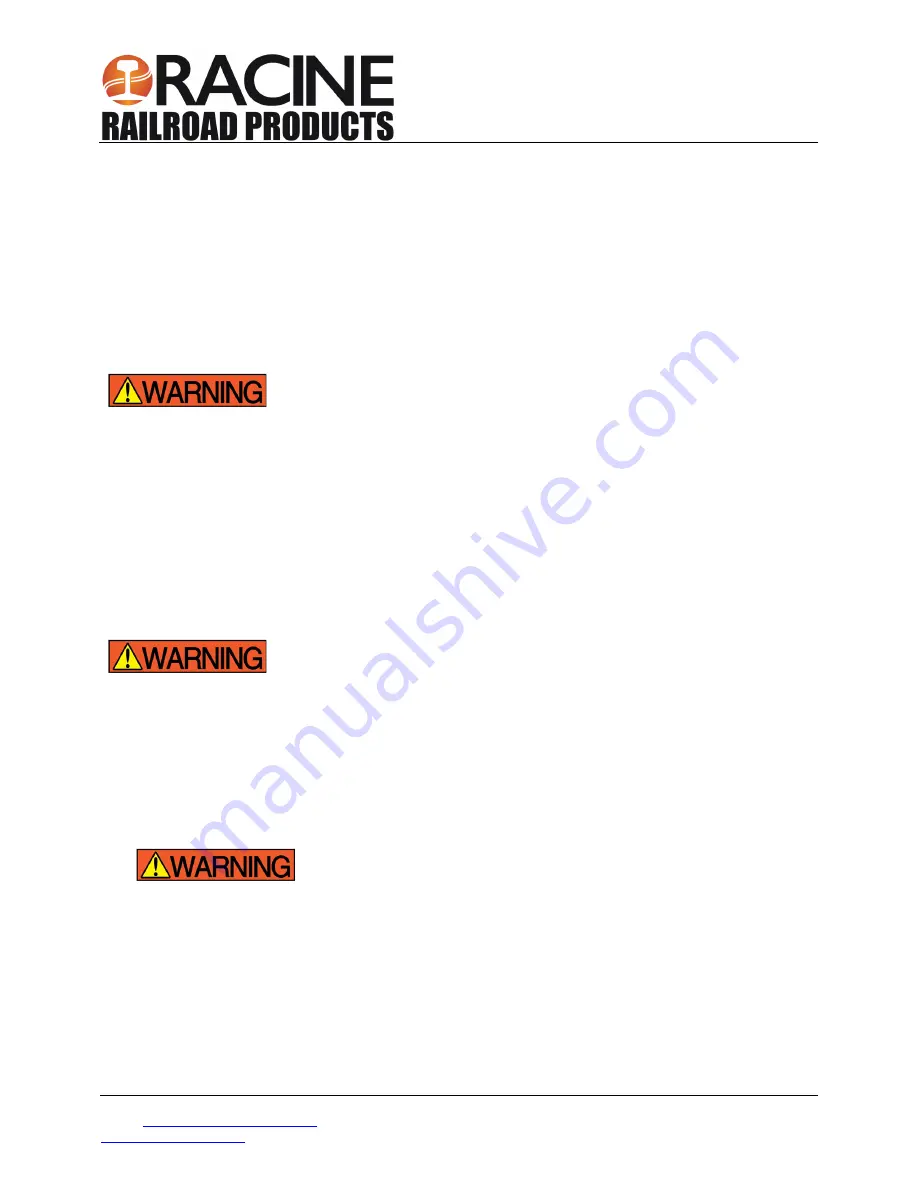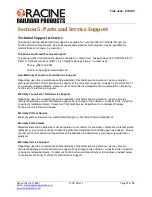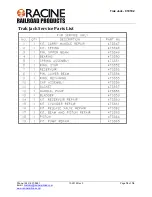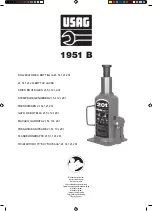
Trak Jack - 910192
Phone: (262) 637-9681
10.2019 Rev 3
Page
12
of
18
Disconnecting Hoses
1. Stop the hydraulic power source.
2. Depressurize the system.
3. Allow system and hydraulic fluid to cool.
4. Disconnect the supply (pressure) hose to the power source (pressure port) from the tool (IN port).
5. Disconnect the return (tank) hose to the hydraulic power source (return port) from the tool (OUT port).
6. To prevent contamination, always install dust caps over the hydraulic ports of the tool when
disconnected.
If injury results from escaping hydraulic fluid, seek immediate
medical attention. Serious bodily injury may occur if proper
medical attention is not administered immediately.
Do not attempt to locate hydraulic leaks by feeling around hoses
and fittings with your hands. Pinhole leaks can penetrate the skin.
Section 3: Tool Operation
Before putting the Trak Jack into initial service, or after an extended period of being unused, perform a
visual inspection for bent, broken, cracked, missing or worn components.
Make sure the hydraulic fluid and lubricant level is correct. Fully extend and retract the rail jack without a
load to ensure that the jack is primed.
Overtightening the release valve can damage the valve seat.
Do
not
use pliers or wrenches to tighten the release valve.
Raising A Load
1. Before using the Track Jack, make sure that it is set on a firm surface capable of bearing the intended
load.
2. Make sure the release valve is closed. Turn it clockwise until it is hand tight
3. Pump the handle until the toe lift or head lift plate rises to and engages the load.
Make certain that the lifting toe is fully engaged on the load, and
the entire jack is stable, before proceeding further.
4. Insert the jack handle fully into the handle socket and pump until the desired lift has been obtained.
5. Remove the jack handle from the handle socket once the load reaches its desired height.
6. Crib or block the load to prevent accidently dropping the load.




































